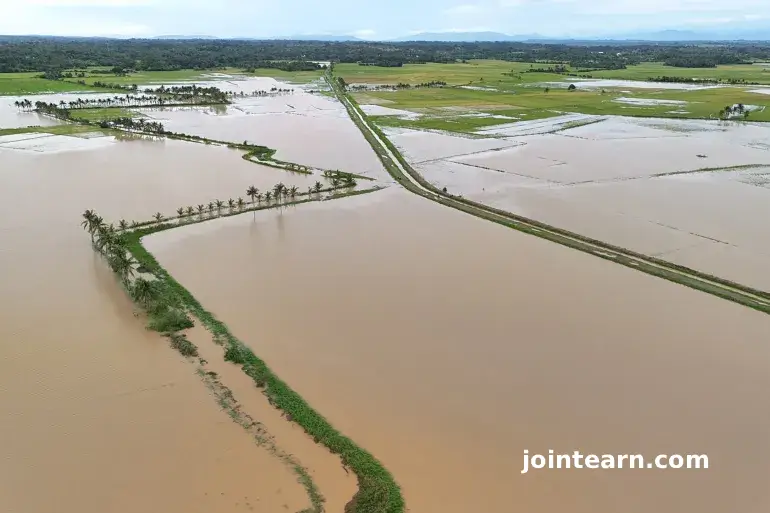
Thousands of residents along the Philippine Pacific coast have evacuated their homes as Tropical Storm Fengshen approaches, bringing warnings of heavy rainfall, strong winds, and potential coastal flooding. Authorities urged residents, particularly those in vulnerable areas, to move to safer ground ahead of the storm’s arrival.
Fengshen Threatens Catanduanes Island
The eye of Tropical Storm Fengshen was forecast to brush past Catanduanes, an island home to approximately 270,000 people, later on Saturday. Meteorologists warned of gusts reaching 80 km/h (50 mph) and a “minimal to moderate risk” of coastal flooding caused by waves up to 1.2 meters (3.2 feet) high.
More than 9,000 residents of Catanduanes have already relocated to safer areas, according to the provincial disaster office. Evacuation plans were activated for high-risk zones including:
- Coastal communities
- Low-lying areas prone to flooding
- Landslide-prone slopes
Gerry Rubio, a provincial rescue official, told AFP that local governments were instructed to ensure the safety of residents in disaster-prone locations.
Philippines’ Vulnerability to Storms and Typhoons
The Philippines faces an average of 20 storms and typhoons per year, often affecting regions where millions live in poverty and lack robust infrastructure. Scientists warn that climate change is intensifying storms, making them more destructive and unpredictable.
Tropical Storm Fengshen follows a series of recent natural disasters, including:
- A magnitude 6.9 earthquake in Cebu province earlier this month, killing at least 79 people
- A magnitude 7.4 offshore earthquake in the southern Philippines, killing six and triggering a secondary magnitude 6.9 quake
- Typhoon Ragasa in late September, which killed several people and displaced thousands in northern Philippines
The series of disasters has left communities on edge, emphasizing the importance of preparedness and early evacuation in mitigating casualties and damage.
Disaster Preparedness and Evacuation Efforts
Philippine authorities routinely conduct evacuation drills to prepare residents for typhoons and floods. Catanduanes, often the first landmass hit by cyclones forming in the western Pacific, has developed emergency plans to protect vulnerable communities.
The provincial disaster office continues to monitor Fengshen’s progress and has urged residents to follow safety instructions, secure property, and avoid travel in high-risk areas until the storm passes.
Climate Change and Increasing Storm Intensity
Experts note that storms like Fengshen are growing more intense due to global warming, with rising sea levels and warmer ocean temperatures fueling stronger winds and heavier rainfall. The combination of frequent typhoons and seismic activity makes the Philippines one of the most disaster-prone countries in the world.


Leave a Reply